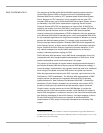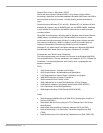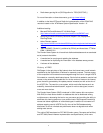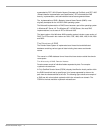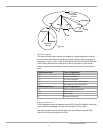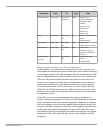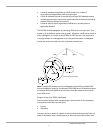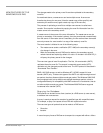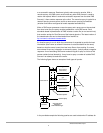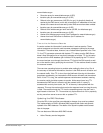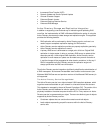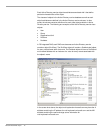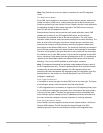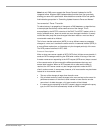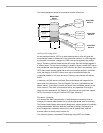
The changes made to the primary zone file are then replicated to the secondary
zone file.
As mentioned above, a name server can host multiple zones. A server can
therefore be primary for one zone (it has the master copy of the zone file) and
secondary for another zone (it gets a read-only copy of the zone file).
The process of replicating a zone file to multiple name servers is called zone
transfer. Zone transfer is achieved by copying the zone file information from the
master server to the secondary server.
A master server is the source of the zone information. The master server can be
primary or secondary. If the master is primary, then the zone transfer comes directly
from the source. If the master server is secondary, the file received from the master
server by means of a zone transfer is a copy of the read-only zone file.
The zone transfer is initiated in one of the following ways:
• The master server sends a notification (RFC 1996) to the secondary server(s)
of a change in the zone.
• When the secondary server’s DNS service starts or the secondary server’s
refresh interval has expired (by default it is set to 15 minutes in the SOA RR), it
will query the primary server for the changes.
There are two types of zone file replication. The first, full zone transfer (AXFR),
replicates the entire zone file. The second, incremental zone transfer (IXFR),
replicates only the changed records of the zone. The IXFR protocol is discussed in
“Incremental Zone Transfer."
BIND 4.9.3 DNS servers, as well as Windows NT 4.0 DNS, support full zone
transfer (AXFR) only. There are two types of the AXFR: one requires single record
per packet, the other allows multiple records per packet. The Windows 2000 DNS
server supports both, but by default uses multiple records per packet, unless is
configured differently for compatibility with BIND versions 4.9.4 and earlier, that do
not allow multiple records per packet. The Windows 2000 DNS server supports
incremental zone transfer (IXFR).
Querying the Database
DNS queries can be sent from a client (resolver) to a DNS server (a name server),
or between two name servers.
A query is merely a request for records of a specified type with a specified name.
For example, a query can request all host RRs with a particular name.
There are two types of queries that can be made to a DNS server:
• Recursive
• Iterative
A recursive query forces a DNS server to respond to a request with either a failure
Windows 2000 White Paper 8
NEW FEATURES OF THE
WINDOWS 2000 DNS




